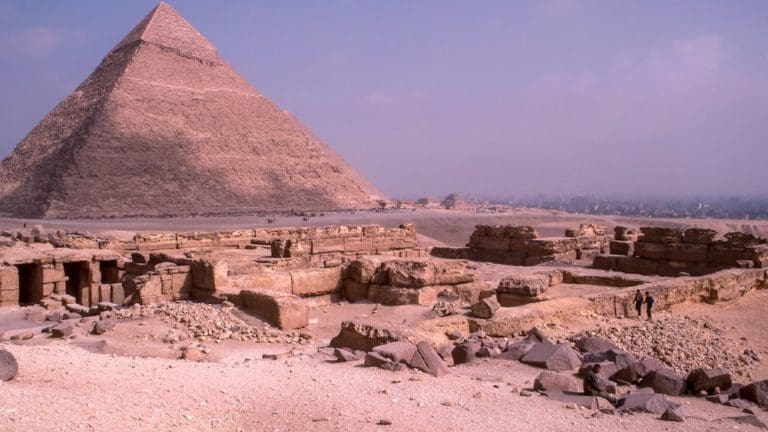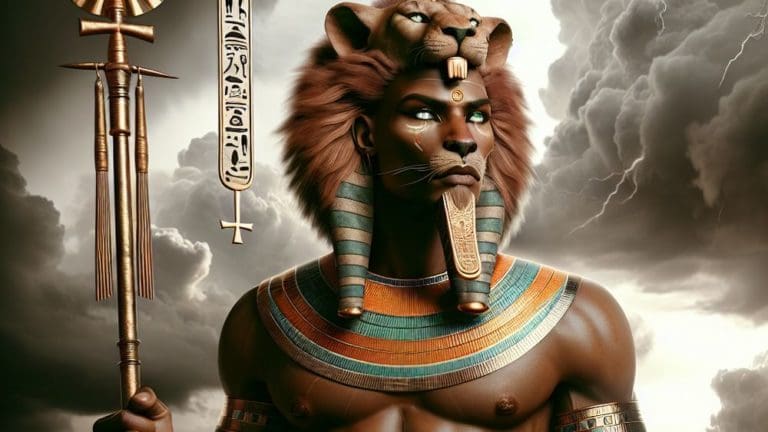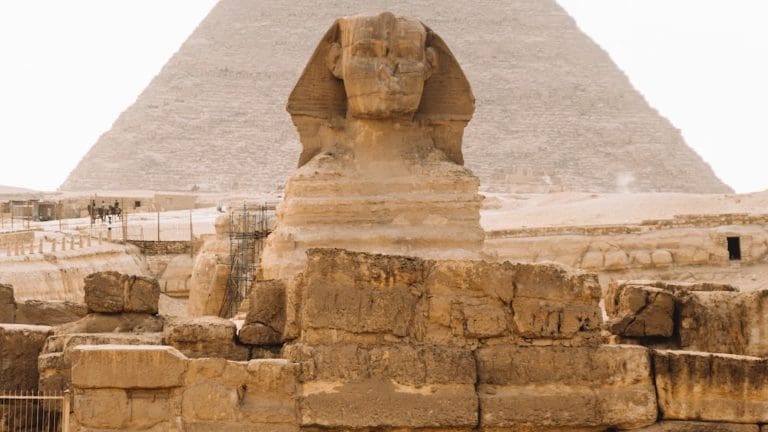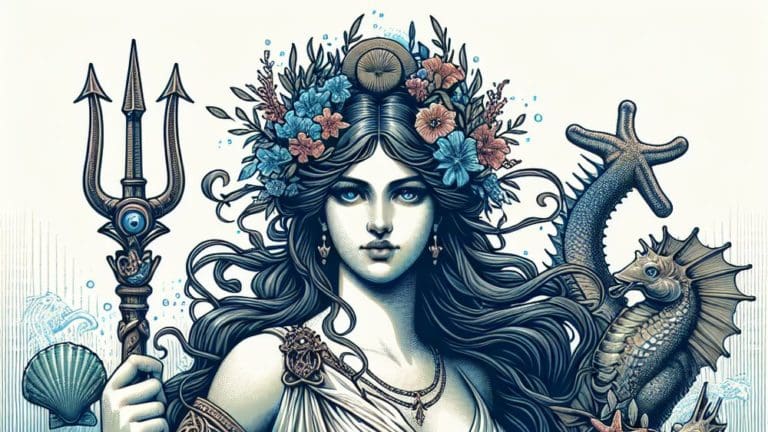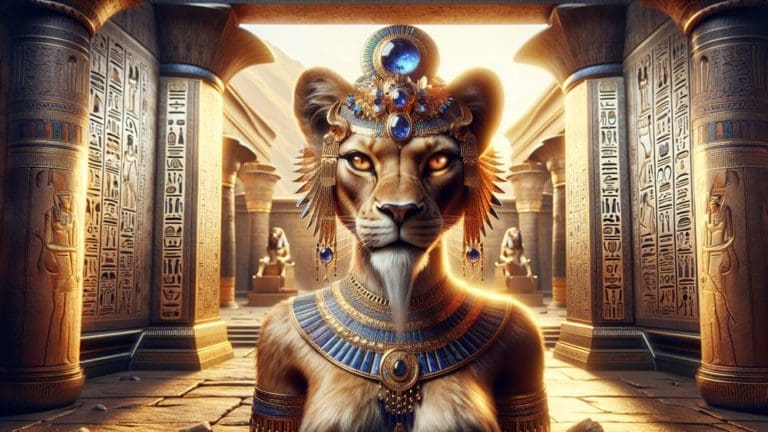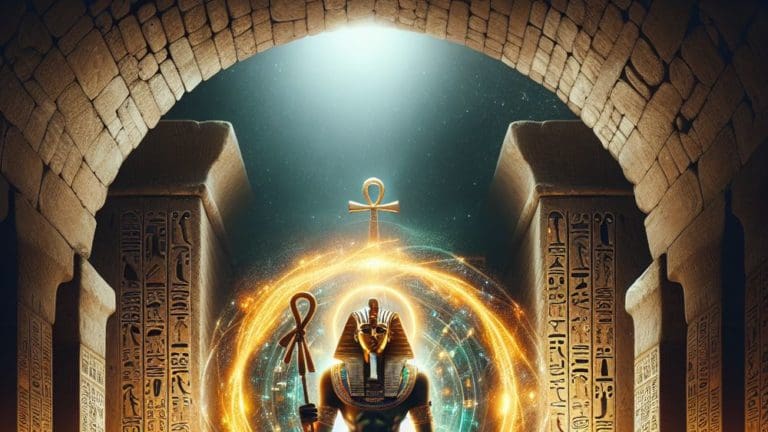Wepwawet Egyptian God: Unveiling The Mythology And History
Wepwawet Egyptian God: Unveiling The Mythology And History
Has your mind ever wandered off to the rich tapestry of ancient Egyptian mythology? Our vast human history is a treasure trove of tantalizing tales and mysteries, waiting to be unearthed. If you’re as drawn to the enigmatic charm of yesteryears as I am, then join me as we pierce the veil of misty antiquity and delve into the lore of Wepwawet, the Egyptian God.
Wepwawet – a name, a myth, an enigma wrapped in the cloak of ancient Egyptian history. This deity, often overlooked in the pantheon of popular Egyptian gods, arouses our curiosity and beckons us closer. Layer by layer, let’s peel back the veneer of obscurity surrounding this fascinating figure.
Archeological findings, historical narratives and mythology have painted vivid strokes of this ancient deity, leaving behind a jigsaw puzzle of intriguing clues. So, kindle your spirit of adventure as we embark on a journey to piece together the puzzle of Wepwawet’s role, iconography, and influence.
The Origin of Wepwawet
The vibrant tapestry of Egyptian mythology hosts an array of deities, each with their unique origin story. Our mysterious hero, the Wepwawet Egyptian God, emerges from the same impressive lineage. His story is a maze of interconnected tales and symbolism, etched onto the pages of time.
The Name and its Meaning
Immerse yourself in the world of ancient Egyptian hieroglyphs as we decipher the name ‘Wepwawet’. Derived from the Egyptian word ‘wep-wA-wt’, it translates to ‘Opener of the Ways’. A name, not just a mere word, but a doorway into understanding the deity’s purpose and role.
Our exploration doesn’t stop here, for the name holds deeper nuances. The word ‘Ways’ could indicate paths or roads, but in a spiritual sense, it symbolized the journey of life, approaching battle, and even the path to the underworld. Doesn’t the varied interpretation fuels your fascination?
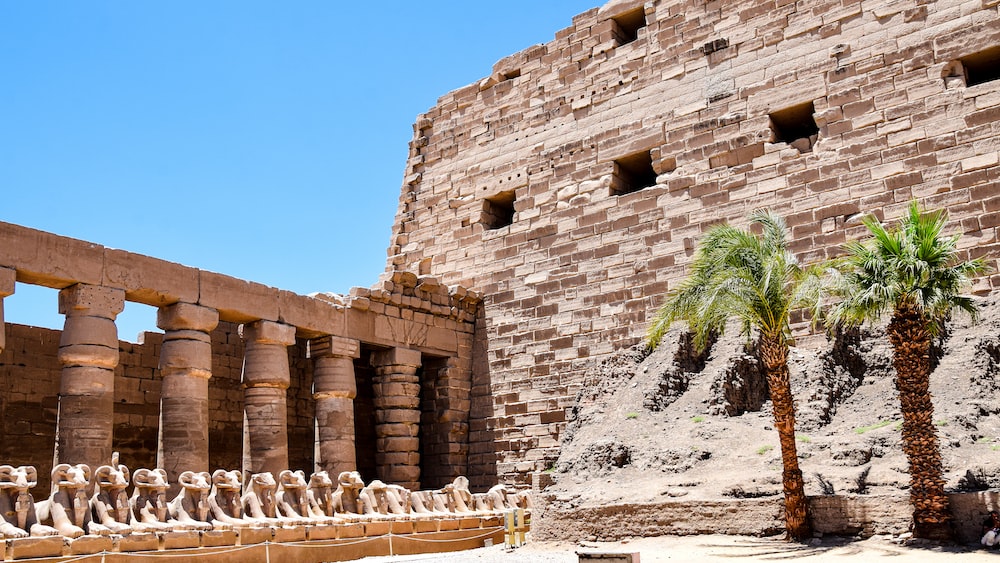
The name ‘Wepwawet’ translates to ‘Opener of the Ways’, symbolizing the journey of life, approaching battle, and even the path to the underworld.
Historical Background
Turn back the pages of history and you’ll find the first traces of Wepwawet in the Predynastic Period. Though shrouded in uncertainty, David G. Anderson, an eminent archaeologist specializing in Egyptian mythology, offers intriguing insights affirming that this deity was revered as early as the fifth millennium BC.
His cult was primarily centered in the Upper Egyptian cities of Abydos and Asyut. Ancient Egyptian expressions of art and architecture are generously sprinkled with depictions of Wepwawet. When we gaze at these representations, we learn that he was often portrayed as a jackal-headed man or a canine creature.
The impressions we glean from scriptures and studies, such as “Reading Egyptian Art” by Richard H. Wilkinson, reveal that Wepwawet evolved over time. From an ‘Opener of the Ways’ in the mortal realm, to a vital figure guiding entities through the underworld, his mythology expanded and morphed over epochs.
The Role of Wepwawet in Egyptian Mythology
One cannot unravel the full spectrum of the Wepwawet Egyptian God without plunging into the depths of his role in the convoluted backdrop of Egyptian mythology.
Wepwawet and the Underworld
Submerge yourself in the mysterious alleys of the ancient Egyptian underworld to appreciate Wepwawet’s significant role. Deciphering the ‘Book of the Dead’, we unveil Wepwawet as the ‘Opener of the Ways’ to the underworld, guiding deceased souls through the realm of shadows.
In this mythos, Wepwawet clears the path for the pharaoh’s voyage in the underworld, banishing obstacles and vanquishing potential threats. What a thrilling panorama of the past emerges from deciphering symbols and scripts!
Wepwawet as a War Deity
From the tranquil realm of the afterlife, Wepwawet also ventured into chaotic battlefields. Could you imagine the dualistic nature of our Egyptian deity, overseeing both solemn funerary rituals and fierce war zones?
As a war deity, Wepwawet ‘opened the way’ to victories, rendering him indispensable in royal warfare strategies. This unique facet of Wepwawet offers us a glimpse into the versatility and complexity of Egyptian gods.
Iconography and Depictions of Wepwawet
Housed within the vast halls of Egyptian mythology, the mystical figure of Wepwawet owes much of his recognition to his distinctive iconography and representations.
Wepwawet in Ancient Egyptian Art
Immerse yourself in the riveting, vivid realm of Egyptian art, where depictions of Wepwawet abound. Be it the grand wall tapestries of ancient Egyptian temples or carvings etched onto monumental royal sarcophagi, Wepwawet leaves his paw prints throughout the timeline of this breathtaking era.
Look closely, and you’ll observe Wepwawet as a man with the head of a canine or a sleek, standing creature, often mistaken as a wolf, a jackal, or a dog. His imagery remains one of the most enduring and distinctive symbols of the complex web that is Egyptian mythology.
The Animal Symbolism of Wepwawet
To truly grasp the enigmatic allure of Wepwawet, the Egyptian god, we must venture into the rich symbolism of his animal embodiment. Wepwawet was typically depicted as a jackal or a wolf, creatures noted for their vigilant nature and indomitable spirit. In the harsh landscapes of ancient Egypt, these animals were equated with both danger and protection, mirroring the dual characteristics of Wepwawet himself.
In some renditions, Wepwawet was shown with a grey or white head of a wolf, swirling with mystery and fascination. This variation not only highlights the god’s association with the underworld but also underscores his unique role as a path opener, guiding souls through the deep, dark labyrinth of the afterlife. Like a wolf howling in the silence of the night, Wepwawet stands as a resounding symbol of the uncanny, calling out to the curious to delve deeper into the enigmatic world of ancient Egyptian mythology.
Wepwawet, the Egyptian god, is symbolized by a jackal or wolf, representing his vigilant nature and dual characteristics of danger and protection, while his grey or white wolf head emphasizes his role as a path opener in the underworld.
The Worship and Cult of Wepwawet
Delving into the worship and cult of Wepwawet, the Egyptian god, is much like stepping into a sprawling, dusty labyrinth lined with remnants of bygone centuries, shrouded in mysteries waiting to be unraveled.
Main Centers of Worship
As we embark on this journey, we discover the deeply rooted reverence for Wepwawet, notably echoing in the towns of Lycopolis, now known as Asyut, and in the region of Upper Egypt. Archaeological renditions suggest that these places might have been primary centers of worship, silently bearing witness to countless rituals dedicated to Wepwawet through the ages.
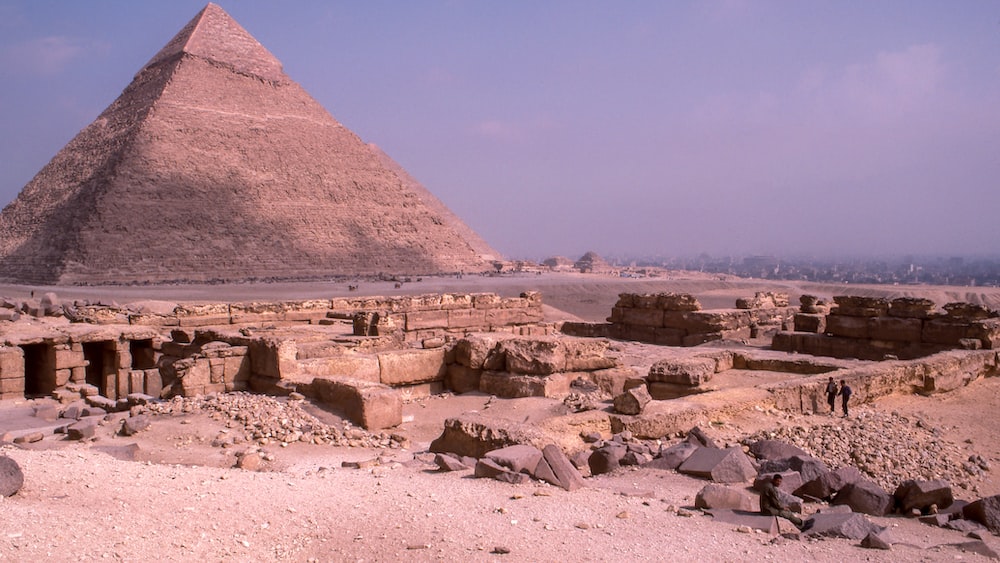
As we traverse these regions with our imaginations, we can still see, almost palpably, the grand procession of priests and devotees, reverberating with ancient hymns, their fervent prayers whispered to the stone-lined avenues of their sacred cities. Here, in these places, the haunting presence of Wepwawet, the Egyptian god, lingers, a revered deity whose worship seems to have entwined with the very pulse of these lands.
Beyond these primary centers, there were numerous other locations scattered across Egypt, where the whispers of Wepwawet’s worship could be heard. These sites form a rich tapestry of reverence that spanned the length and breadth of Egypt, a vibrant testament to the persistent belief in Wepwawet’s power and significance.
Rituals and Festivals
As we delve deeper into the shadows of history and excavate the soil of forgotten temporal landscapes, we unearth precious hints about the rituals and festivals celebrated in honor of Wepwawet.
Embedded in numerous fragments of pottery, stone works and steles, we find stories of grand processions held under the glowing Egyptian sun, and of elaborate rites enacted under the soft shimmer of the moon. The air around us seems to resound with the clashing cymbals, and the rhythmic beats of drums echo the sounds of processions, led by elaborately garbed priests, a pageantry of faith dedicated to the indomitable Wepwawet.
Wepwawet and Other Egyptian Deities
Casting our gaze over the formidable pantheon of ancient Egypt, we see Wepwawet, the Egyptian god, maintaining an intricate relationship with other deities.
Relationship with Anubis
Delving deeper into his associations, we find an intriguing connection with Anubis, another prominent jackal-headed god related to the afterlife. On the surface, Wepwawet and Anubis may seem twin entities in their shared iconography. However, upon closer investigation, their layered interplay becomes apparent.
While Anubis was the gatekeeper of the underworld, Wepwawet was often depicted as the one paving the way, acting as a shepherd to guide souls on their journey to the afterlife. Their relationship is a seminal example of nuanced roles in the pantheon, blurring the line between death and rebirth.
Moreover, beyond their individual roles, Wepwawet and Anubis might have shared familial connections in some accounts. As we untangle the threads of this intricate tapestry, the relationship between these two fascinating deities becomes an intricate tale in itself, begging further exploration.
The relationship between Wepwawet and Anubis reveals a nuanced interplay between guiding souls on their journey to the afterlife and being the gatekeeper of the underworld, blurring the line between death and rebirth.
Comparison with Other Jackal Gods
As we continue our exploration, we must also cast our spotlight on the larger canvas of jackal-deities within the ancient Egyptian pantheon. Besides Wepwawet and Anubis, there exist other, lesser-known jackal gods, each holding their unique standing in the divine hierarchy.
Each deity had a distinctive iconography and role within the religious narratives, contributing uniquely to the multifaceted, enigmatic tapestry of Egyptian mythology. Some served as guardians of sacred spaces, while others were believed to be divine judges. This fascinating diversity underscores the wealth and complexity of the pantheon and further illuminates the individual characteristics and significance of Wepwawet, the Egyptian god.
Wepwawet in Popular Culture
Transitioning from its ancient roots, the lore surrounding Wepwawet, the Egyptian god, has found its way into modern popular culture, painting our contemporary imagination with thrilling hues of times long past.
Wepwawet in Literature and Film
While the name Wepwawet Egyptian God might not be as widely recognized as other mythical figures, this intriguing deity has found its way into various forms of literature and film. The fascinating mysteries surrounding his origins, role, and iconography have been recorded and creatively interpreted by modern authors and filmmakers.
Novels like Rick Riordan’s “The Serpent’s Shadow,” part of the Kane Chronicles series, feature Wepwawet quite prominently. In this narrative, the jackal god’s powers and attributes are woven into the plot, fueling the thirst of history enthusiasts and mythology buffs.
In the realm of film and television, while Wepwawet may not be the main character, he lends depth and richness to the tableaux. One prominent example is the movie “The Mummy Returns,” where he is alluded to in the context of the underworld and opening ways to the afterlife, revealing his stature in ancient beliefs.
Modern Interpretations and Representations
Wepwawet’s enduring influence doesn’t just stop at literature and film. With the increased interest in ancient Egyptian mythology, contemporary artists, occultists, and enthusiasts have given a fresh spin to the iconography of this enigmatic deity.
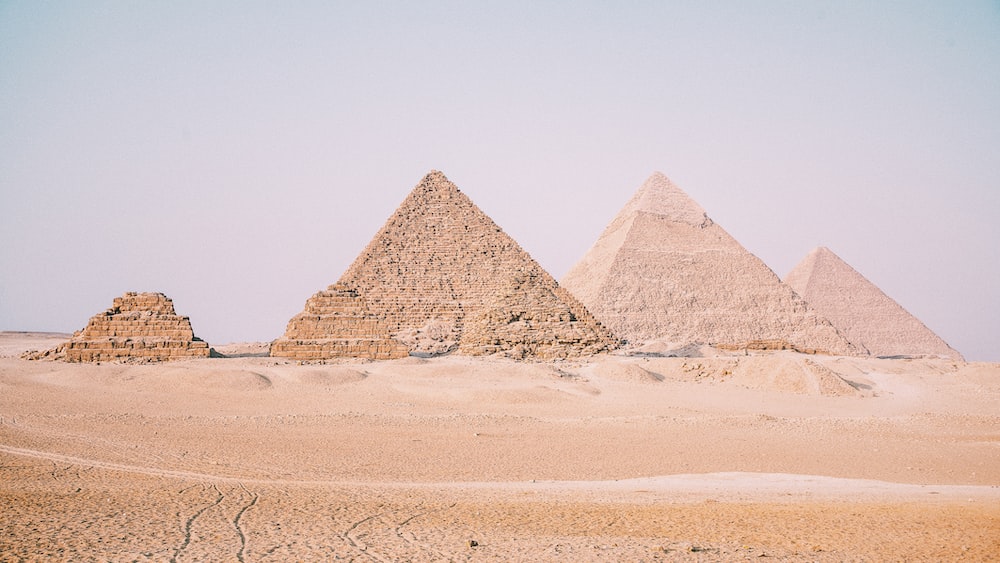
Modern representation often intricately combines old symbols with new aesthetics, introducing Wepwawet in forms one might find on tattoo designs or graphic prints. In the world of tarot, he is often associated with transitions, journeys, and revelations, echoing his ancient role as the opener of ways.
Inspired by Wepwawet’s role in war and the underworld, games like Age of Mythology and Smite offer players a chance to assume the deity’s divine talents. This interaction allows modern audiences to appreciate and connect with the role of the Wepwawet Egyptian god in a more engaging and personal way.
FAQs
1. Who was Wepwawet in Egyptian mythology?
In ancient Egyptian mythology, Wepwawet was a prominent deity known as the “opener of the ways.” His major roles included guiding people into the afterlife and leading armies into battle, signifying his tight links to both the underworld and war.
2. How was Wepwawet depicted in ancient Egypt?
Wepwawet’s depiction in Ancient Egypt was steeped in rich symbolism. Often, he was represented as a man with the head of a canine, typically a jackal or a wolf, carrying a flagellum, a necropolis seal, and a staff, signifying his role as a guide to the underworld and a war deity.
3. What was the role of Wepwawet in the Egyptian pantheon?
Moving on to the Egyptian pantheon, Wepwawet had a substantial role. His primary function, as mentioned, was as the ‘opener of ways’ with an emphasis on leading souls to the realm of the deceased and guiding the life paths of the living. Furthermore, as a war deity, he stood at the battlefield’s forefront, symbolizing fearlessness and victory.
4. How is Wepwawet represented in modern culture?
In modern culture, Wepwawet’s representation spans across literature, film, fine arts, and games. He is often portrayed associated with paths, transitions, and revelations, and in some instances, his warrior aspect is emphasized.
Conclusion
Our exploration of the tale and mysteries surrounding the Wepwawet Egyptian God comes to an end here, but this doesn’t mean it is the end of the journey. The deity’s mythology opens a window into an ancient civilization’s complex belief system, benefitting history enthusiasts, amateur archaeologists and avid travelers with unquenchable curiosity.
Navigating through Wepwawet’s stories and depictions, we’ve seen echoes of the past reverberate into the present through literature, film, artwork, and even video games. In every story told, in every image crafted, in every game played, the spirit of Wepwawet lives on, the ‘opener of ways’ guiding us on our own paths of exploration, and discovery.
As we part ways for now, I hope that you, like me, are left with a desire to delve deeper into the fascinating mysteries of our shared past. After all, who knows what new insights lie waiting for us just beyond the horizon? Until next time, keep exploring, and remember, every adventure begins with a single step. Stay curious! Signed, Cedric.


